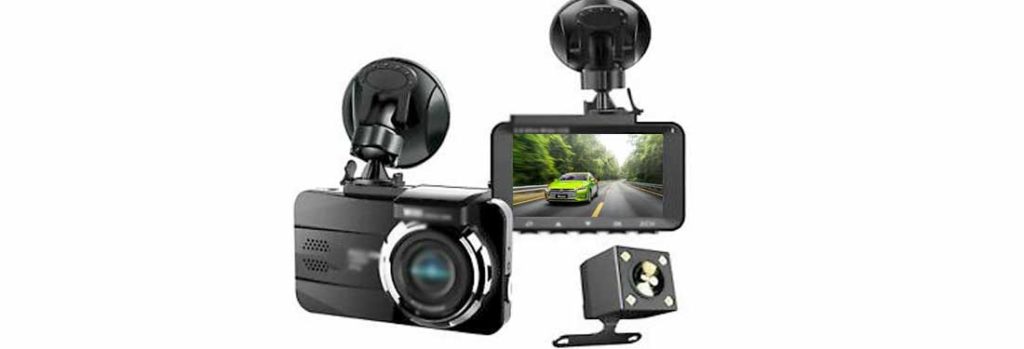
What is a Dual Channel Dash Cam?
A commonly asked question in regards to dash cams is what is a dual channel dash cam?
This article answers this common question with an easy to follow guide.
Dual channel dash cams are slowly becoming the new norm.
Regular dash cams represent just one single unit that records what is happening directly in front of the car.
A dual channel camera setup has a camera in the front and one in the back.
These systems are much more complicated but are not considerably more expensive than regular dash cams.
Here are a few essential things you should know about dual channel dash cams.
Dual Camera System
A dual channel dash cam kit consists of two cameras that work in tandem. The rear camera records at the same time with the front camera and saves the videos on the same memory card.
This setup is done in multiple ways but there are a few hardware specifics and design choices that are required to make a dual channel camera work from a commercial perspective and in terms of functionality.
Rear Camera
Usually, the rear camera is built to be as simple as possible. It is smaller than the front camera and it does not have a display or micro SD expansion card slot. Video recordings on the rear camera are saved on the memory card in the front camera.
This approach saves money on the entire kit as it requires less hardware for the rear camera, thus making a dual channel dash cam kit cheaper than buying two dash cams.
The way the rear camera communicates with the front camera can be done in two ways.
Camera Connection
The more common method is to connect the rear camera to the main camera using a physical cable. It is usually a micro or mini USB cable that is used to transfer data between the two cameras and provide power from the front camera to the rear one.
The main camera gets power from the vehicle and in turn, it provides power to the rear camera.
If you do not like running a cable from the front of the car to the rear, the alternative is to get a dual channel dash cam kit that uses a wireless connection between the front and rear camera.
Wireless Connection
This setup eliminates the need to connect the two cameras via a physical cable but the rear camera still requires a power source.
To power the rear camera, professional help is required as you may need to get power from a dome light or a tail light that is always on.
The Downside to a Wireless System
A wireless dual channel dash cam kit can be tempting but it has several issues that need to be dealt with.
The installation of a wireless kit is complicated. A regular dual channel dash cam kit can be powered easily by just connecting the two cameras with the physical cable provided and then powering the front camera from a lighter socket.
Cable Management
The cables will need some form of cable management. You will need to hide them somehow around the seats or behind the headliner. Depending on your car, your options may be different.
Wireless dual channel dash cams will be more challenging when you want to find a power source for the rear camera.
A professional car electrician may be required as he will need to run the cable to a tail light or some other power source.
Parking Mode
Another issue worth noting is that parking mode does not work the same on wireless dual channel kits. Both cameras need to have a continuous power source even when the car is parked.
Kits that use a physical cable to connect the front and rear camera can be connected to the fuse box thus they can receive power even when the car is turned off.
Do You Actually Need a Dual Channel Dash Cam Kit?
For traffic incidents, odds are you will never need the rear camera footage. If you get rear-ended, the drive that was behind you should be paying the repairs.
A dual channel dash cam makes sense for the parking mode. It is not that uncommon to leave your car in a public parking lot and find it damaged.
The rear camera may be able to save you from costly repairs if your car gets damaged in the rear while it is parked.
Low Cost Dual Channel Dash Cam Options
The Viofo A129 Duo is not significantly more expensive than a simple front-facing camera and can be hardwired to the fuse box to provide permanent front and rear surveillance.
It is a great example of a functional and practical dual channel dash cam.
What you should remember is that such dual-camera setups require more storage space thus you should consider getting a large micro SD card of at least 128GB.
Read this guide on how to choose a good dash cam
All the key information on quality dash cams: What makes a good dash cam?
Popular Posts




